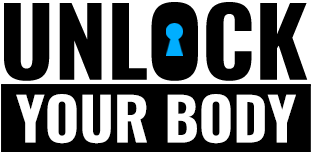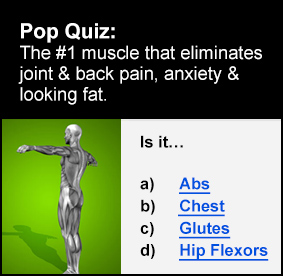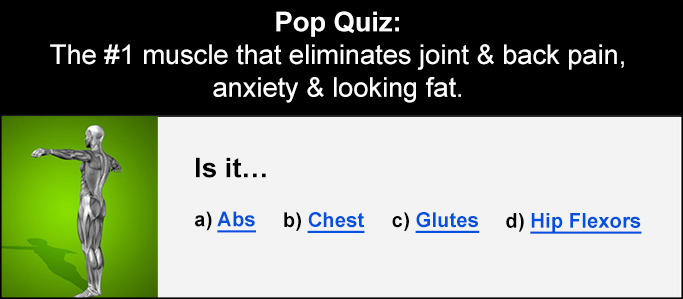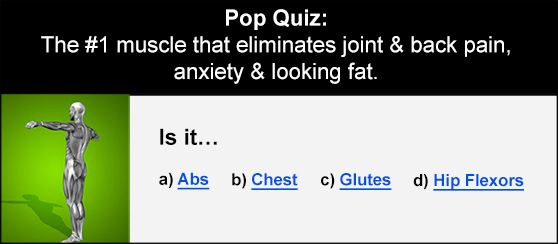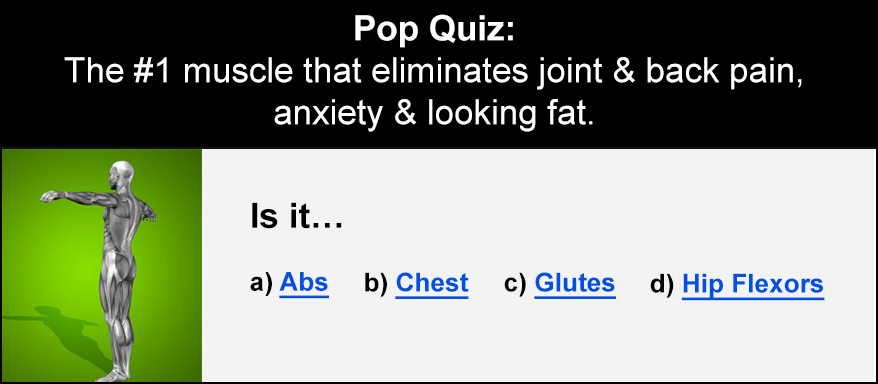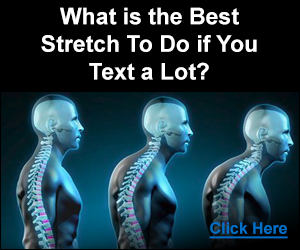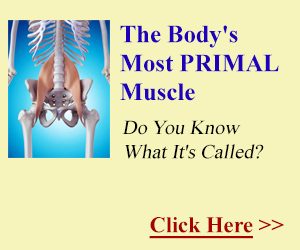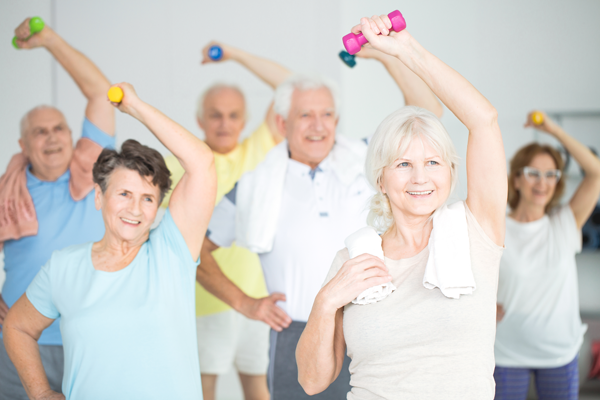
As we age, the importance of keeping the muscles and joints healthy on grows.
Aging is one of the key contributors to common injuries and quality-of-life factors. It is tied into joint injury and independent mobility in important ways: if you want to live well, you have to master aging well.
We’re going to discuss the real problems that we will all face as we age, and provide advice on how to age better and keep yourself healthy. If you want to stay mobile and pain-free, read on!
What are the Risks and Needs for Seniors?
As we age, the muscles and bones become weaker, the tendons lose their stiffness, and the joints deteriorate from wear and tear. No matter how well you look after yourself, this is coming for us all.
What you want to do is prolong the healthy, happy, independent times of your life. This is all about managing your risk and giving your body the best chance of staying healthy and functional for as long as possible.
There are a few important risks and contributors:
- Bone weakness
- Tendon laxity
- Loss of muscle/strength/power
- Postural changes/muscle tightness
- Reduced motor control and body-awareness
Bone Weakness
As you age, the minerals that make up your bones are slowly washed out, leaving the bones weaker and weaker. This contributes to everything from reduced mobility to an increased risk of broken bones. This is a serious problem as it reduces independent mobility and the ability to exercise – making fractures even more likely.
Getting out of this vicious cycle of fractures and immobility and more fractures is key. If we can prevent or address these problems, it’s possible to save years or decades of discomfort and suffering. If you’re healthy enough to exercise now, you can start preventing these problems years in advance.
Tendon Laxity
You probably don’t think about your tendons until they’re already a problem. However, they degrade in the same way that muscles and bones do.
The stiffness of a tendon is key. They’re tough, elastic tissues that absorb some shock and allow you to move. They ensure that your muscles can actually move your bones so, when they become lax as you age, they compound the risk of losing the ability to move independently.
Very few things will change your quality of life like struggling to stand or walk without help. Tendons are a huge part of this, as well as being a huge player in long-term joint health. Strengthening the tendons is crucial to keeping yourself strong, healthy, and mobile.
Loss of Muscle/Strength/Power
This is a common problem we all know about. As we get older, the ability to develop and maintain muscle, strength and power declines.
This is linked to everything from difficulty moving to changes in metabolism and an increased risk of falls and fractures. In simple terms, this is the loss of control and strength in the body, which are crucial for more than lifting weights or looking good!
Strength and power are key for everything you do with your body. Sarcopenia (the scientific name for this decline in muscle and strength) is a key factor in everything from obesity to fall-risk in the elderly. Protecting yourself from this process is one of the easiest ways to improve your overall health.
Postural Changes/Muscle Tightness
Weak muscles aren’t always loose. Sometimes they’re tight to protect themselves from over-stretching and being too weak to control the joint. Short-locked muscles are weak and they can cause serious problems.
The loss of strength can bring about muscle-tightness as a form of protection. This is over-compensation to protect the muscles, but it puts the joints at risk. Excessive tightness can put you into awful posture – a risk factor for long-term immobility and problems like hunching.
We tend to see these problems around the most injury-prone joints: the shoulders, neck and lower back. They also play a part in the huge amount of knee and hip surgeries that elderly individuals need. A total knee replacement or hip replacement are both huge surgeries with complications and long-term life impact.
Avoiding these problems will mean a reduced risk of infection, hospitalisation and difficulty in everyday tasks. It’s important to remember that healthy aging isn’t just about what will happen decades from now, but the person you will be in a year or two. It’s about your long-term trajectory, and for how long you can continue doing the things you love. Healthy aging isn’t just for the aged.
Reduced Control and Awareness
Linked to the loss of muscle mass, reduced control over your body and awareness of your limbs is actually a huge problem.
Some research even suggests that this is a cause for a loss of muscle mass in some people. Losing control of the muscles is one of the key factors in the struggle to stay mobile into old age. Being aware of this risk is important because it allows us to target the problem and combat it before it becomes a risk.
The science tells us that strength alone isn’t enough to protect us from injury. It’s necessary, but it also needs to be paired with effective control and movement to keep you safe for the long-term.
Mobility Exercises for Seniors
Mobility exercises are aimed at improving the flexibility of muscles and the range of joints. They also focus on improving control over these structures and better-protecting the joints from injury.
They aim to make you more comfortable in challenging positions, improve the amount of “safe” range in each of the joints and improve your overall comfort in positions that you’re currently struggling with.
Why is Mobility Important?
Proper mobility is a key factor in improving posture and regaining control over the muscles. Control, strength, and mobility are related – they’re not competing changes!
By improving the mobility in the quads, for example, you can regain control over the hips and reduce your risk of lower back injury. This is one example, but the same applies in the shoulder: too much tightness on either side of the joint drastically increases your risk of inhibition, pain and injury.
Stretches and Exercises for Improved Mobility
- Knees
The two key muscle groups attached to the knee are the quads and the hamstrings, but the glutes are also attached by a long ban of tendon called the IT band. To keep your knees healthy, you need to stretch and exercise these tissues.
Imbalance here can cause the knee cap to be out of pace, or damage the tendons holding the knee together.
Stretching the Quads is important because they’re attached at the knee and hip – two key areas where we see injuries. Reducing tightness here will keep the knee moving healthily and align the hip properly.
You can start with a standing quad stretch if you’re really tight, and progress to the couch stretch as you become more flexible and confident with the stretch. In both of these stretches, focus on keeping your core stable and don’t let the hip rotate back. You should keep the distance between the top of your hip and the bottom of your ribcage constant throughout!
Once you’re comfortable in the stretch, try squeezing your butt to keep the hips in and improve the stretch.
Stretching the Hamstrings is a slow process. Many people don’t move them through the full range of motion they need. This means you’re probably going to have to overcome this tightness.
“Toe-touches” are a great, dynamic way of improving your mobility and getting some movement into stiff hamstrings. Don’t worry if you can’t reach your toes – just go as low as you can.
Once your mobility develops, you can try an L-sit in the corner between the wall and the floor. This is a much more difficult process, but it will bring you along much further than a simple toe-touch.
Stretching the Glutes is a challenging process. It’s also slow. We can roughly break it down into movement and stretching.
The glutes are incredibly important, so one of the best ways to improve mobility is simply to move them as much as possible. They are often immobile because they’re weak and, when used, they travel through the complete range of motion.
Start by developing a hip-hinge pattern. You should be able to feel the muscles moving and, over time, they’ll improve range. The stretching practice should take the form of the iron cross – a stretch that anyone can perform and can be scaled with your developing mobility.
Once you’ve moved and stretched, you can try the pigeon stretch. This is easier in an elevated position, but you should ai to slowly move it to the floor – the most challenging, but effective, way of performing the stretch.
- Hips
We’ve already mentioned the glutes – they’re one of the problems around the hips, but there are others. We’re going to focus on the hip flexors and adductors – the two areas we most often see tightness in.
The Adductors are the muscles in your groin that feel tight if you try and perform the splits. They’re often tight simply because we don’t spend much time using them – the hips aren’t often opened up in modern life.
The best way to stretch these is to start with a butterfly stretch. It’s a slow process, but it provides the movement opportunity necessary to open up the hips and bring some pliability to your adductors.
The next step is a modest straddle stretch. Gymnasts make this look easy and impressive, bu you can start wherever your mobility allows. You should keep your legs as far apart as possible, lean forwards, and reach towards each of your feet.
As you progress, you can perform a supported Kosack squat. This is an amazing exercise for balance, mobility and stability on one foot. A great all-round exercise, and the support ensures you won’t damage yourself!
The Hip Flexors are part of the front of the hip. They’re the ones that help pull the knee up to the chest and, due to the amount of sitting in our lives, they get very tight.
They pull the front of the hips down, into “anterior pelvic tilt”. This over-extends the lower spine and puts pressure through the discs and tissues supporting it. This is a real problem for injury, as it turns off the muscles that support the spine – a hidden cause of serious lower-back pain and injury.
The couch stretch mentioned above is a great choice. However, if you can’t do this yet, you should try the kneeling lunge. This is a much gentler version and allows beginners to improve their flexibility safely.
- Chest/Upper Back
The chest and upper back are related in their effect on your posture. A tight chest/upper back is going to affect your shoulders and where they sit at-ret. This impacts your shoulder health in a huge way, as well as the positioning of your upper spine.
The posture of this region is crucial as it has far-reaching effects on your lower back, shoulders, neck and more. Reducing chest/lat tightness and restoring movement is crucial to better health in the region.
Stretching the Chest starts with movement is key. It begins with a slow, gentle shoulder dislocate – a movement that moves your shoulders through full range and challenging the chest muscles. You can progress this easily by moving your hands closer over time.
You can also perform a wall stretch. This involves supporting your elbow and hand against a wall and turning your body away. Combining these two exercise is a great way to improve the chest flexibility and learn how to move more effectively in the upper back.
It is crucial to keep your core stable, as mentioned before. If you open your torso up too much and lean back, you’ll not stretch the chest. This is an over-compensation, rather than an effective stretch. You need to actively improve the mobility of the shoulder and chest, not your ability to lean back!
The Lats are a stubborn muscle to stretch. You definitely don’t use them through their full length, and they cover so much of the back that tightness here will show up all over. They affect the shoulder joint and the way that your arms move.
The prayer stretch is an amazing way to improve mobility in the lats. You can move side-to-side in this position to stretch each lat, as well as the supporting structures.
One of the muscles that you will target in this stretch is the teres minor – a key muscle in the stability o the shoulder. If you can improve the mobility and strength of this muscle, you can reduce your risk of rotator cuff injury – a common shoulder problem that affects millions of people.
You can progress this to the offset prayer stretch. This is very similar, but you actively move your hands off to one side to make the stretch more intense. This is a difficult stretch to perform if you’re a beginner to mobility training, so you should slowly improve along this progression. Take your time – it’s all helping!
- Neck
The neck is an incredibly important part of the body, being the junction between the head and the spine. These are two of the most important structures in the body, and tightness here is going to radiate in the nerves. It is one of the most common causes of tension headaches, as well as nerve pain throughout the shoulders.
There are two key areas that require stretching to improve the movement and healthy of the neck. This starts with the traps and levator scapulae, as well as the muscles of the neck itself. The connections are complicated, but you need to loosen and move both of these groups of muscles to ensure that you’re not getting “downstream” pain!
The traps and neck muscles are involved in the movement of the head relative to the shoulder blades. The upper traps shrug the shoulder blades up, while the lower traps squeeze the shoulder blades back and together. These are both crucial, as they are inter-connected, and the movement of the scapula is key to the neck and upper back, too.
The shoulder slide is one of the most important ways to stretch the neck-scap structures. It involves taking a weight in one hand, leaning your head away from the weight, and slowly sliding your shoulder as high up and low down as possible. This is a great way of stretching the upper trap and levator scapulae, all while improving your control over the movement of the shoulder blades.
You can also improve the mobility around the shoulder blades and neck by performing opposite movements. The best of these is the wall slide – an exercise that requires you to perform the exact opposite of what the traps do: bring the shoulder blades down and forwards, while rolling a cylinder against a wall.
This is a very specialist movement, but it moves the shoulders through a new movement, improves the overall control and stabilises the shoulder blades in an unfamiliar direction.
Strengthening and Age-Proofing
Building strength and control is both preventative and curative. It can reduce the onset of sarcopenia, but it can also reverse it. There is no age at which exercise is inappropriate.
Your muscles and nervous system are plastic forever. No matter your age, a carefully-managed approach to exercise will bring positive change. These strength and power exercises are designed with this in mind: they improve the strength of your muscles and tendons, as well as your control over them.
Why Is Strengthening Important?
Resistance training is actually one of the best ways to keep the strength of youth. It’s agreat way of building muscle mass, improving your awareness of your own body, and it contributes to a dozen other health markers you probably didn’t realise.
The most obvious is preventing muscle loss – you know how that works. However, it also strengthens the bones and tendons, keeping your joints safe and healthy. The effects on joints and muscles keeps everything in the right place and reduces postural risks, too!
- Knees
Strengthening the muscles and tendons around the knees iso one of the best ways to protect them from the long-term effects of knee injury and instability.
Exercises like the reverse lunge are the best way of improving the health and wellbeing of your knees. This is a simple, accessible exercise that develops leg strength, as well as control and stability through the knee. These are two of the most important factors in knee injury, making this an outstanding choice.
If you’re able, try the Bulgarian split squat. This is a more challenging but more effective exercise – it increases the range and the demand for balance and stability. Learning to control the movement of the knee, ankle and hip through longer ranges of movement is key to preparing them to prevent injury.
Hamstring exercises are also crucial. Try combining a leg extension machine exercise with hamstring curls. This balances the demands on both sides of the knee, keeping the kneecap in the right position and making sure that you’re well-aligned. Too much on either side of the joint causes tendon problems and increases tendinitis risk.
- Hips
Strengthening the adductors and glutes is key to making sure that your hips and spine are well-balanced. They’re also the powerhouse of the body, providing the vast majority of the force in explosive movements.
Strengthening the glutes should start with a weighted butt-march. This is an unusual exercise, but it is an amazing way to strengthen the glutes without much risk, and it combats inactivity weakness. The seated position of this movement is perfect for a low-loaded, high-effectiveness exercise!
As you become stronger and more confident, try the frog pump. This is one of the most effective exercises for strengthening the glutes without using huge loads. It isolates the glutes and moves them through a full range – improving strength and mobility.
The Kosack squat was mentioned above, but it’s the perfect way to strengthen the adductors. The groin muscles are rarely strengthened, so it’s key to give them some attention if you want to keep the knees and hips healthy. You can load it by holding a small weight to the chest.
- Upper Back
The upper back needs to be strong to hold effective posture and counter-balance the demands of a tight chest. This is key to keeping the shoulder well-aligned and reducing rotator cuff injury.
There are two key things you need to train: the wall slide for scap movement, and rowing movements. Start with the YTWL – a gentle, lightweight movement – and proceed to the face pull. These both practice external rotation while strengthening the back of your shoulders and build strength with an extended upper back.
If you master these two movements, you can load with a normal rowing movement like a dumbbell row. This foundation is key before conventional strength training.
Closing Remarks
Mobility and strength are important whatever your age and goals. They insulate you against injury and improve your quality of life. These are essential ways of aging healthily and, if you’re a senior, preventing the most common risks

